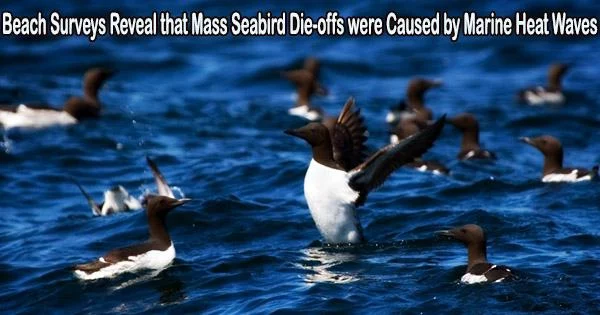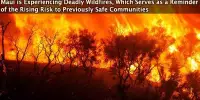Cormorants and puffins alike spend the most of their lives at sea. These animals, which are adored by birdwatchers, can be challenging to study since they spend so much time away from the coast.
In order to understand how seabirds have fared in recent decades, new research led by the University of Washington uses data gathered by coastal residents along beaches from central California to Alaska. The paper, published July 6 in the journal Marine Ecology Progress Series, shows that persistent marine heat waves lead to massive seabird die-offs months later.
“This is truly a global data set that asked a global-sized question: Does a warming world significantly impact marine birds, among the top predators in the nearshore marine environment?” said co-author Julia Parrish, a professor of aquatic and fishery sciences at the UW and executive director of the Coastal Observation and Seabird Survey Team, known as COASST.
“We find a dramatic delayed effect,” she said. “A warmer ocean, and certainly a suddenly warmer ocean as happens during an El Niño or a marine heat wave, will result in the death of hundreds of thousands to millions of marine birds within one to 6 months of the temperature increase.”
Marine heat waves have only recently gained attention. They include extended El Nio occurrences, warmer oceans in Alaska connected with decreasing sea ice, and the exceptionally warm ocean surface off the Pacific Northwest known as “the blob” that persisted from 2014 to 2016.
Prior studies by the UW team connected recent ocean warming to specific seabird die-offs, including those of tufted puffins, Cassin’s auklets, and common murres. This study takes a broader approach.
“Rather than track the specific numbers of any one species, this study measures the magnitude of mortality events, regardless of seabird species, above long-term normal,” Parrish said. “We asked: What rate are carcasses washing in, over what portion of coastline, and for how many months? Larger-magnitude events are those that push up all these measures.”
This is truly a global data set that asked a global-sized question: Does a warming world significantly impact marine birds, among the top predators in the nearshore marine environment?
Professor Julia Parrish
Between central California and Alaska, surveys of beach-cast birds were conducted from 1993 to 2021 for the project. Approximately once every ten years, there would be a truly huge mortality event, with death tolls topping a quarter million birds. But between 2014 and 2019, five events met this mortality threshold.
“This is unprecedented. This type of massive die-off can be compared to a catastrophic storm that we would usually expect once per decade; they happen, causing massive damage, but usually there is enough time for areas to recover,” said lead author Timothy Jones, a UW research scientist in aquatic and fishery sciences. “From 2014 to 2019, the die-offs were not only some of the largest ever documented, but they kept happening year after year like a catastrophic storm hitting without fail every year.”
Analysis reveals that these unusual die-offs were statistically related to the Northeast Pacific’s persistently warmer weather in the months before. Some birds, including murres, puffins, auklets and shearwaters, suffered much more than others.
Four citizen science groups collected more than 90,000 surveys of 106 seabird species on more than 1,000 beaches for the study. The largest area was covered by the UW-based COASST program, spanning northern California to Alaska.
Additional data came from BeachCOMBERS and Beach Watch, both in central California, and the British Columbia Beached Bird Survey, in Canada. These groups give volunteers training so they may look for dead birds on nearby beaches and report what they discover.
Additional data for remote northwest Alaska beaches came from community members’ reports to the U.S. Fish and Wildlife Service and Alaska Sea Grant.
According to the data, carcasses started washing up a few months after global warming started, and they did so in a pattern that lasted nearly three years. Each die-off has a unique exact cause, yet they are all tied to global warming. Warmer water can encourage hazardous algal blooms and raise the possibility of disease outbreaks, both of which during the research period led to incidents of seabird mortality.
“Most notably, prolonged ocean warming changed the type, abundance and nutritional value of seabirds’ prey, leading to widespread starvation,” the authors said.
“With this intensity of warming, like the looming El Niño in the Pacific or the current marine heatwave in the North Atlantic, we are facing a new ocean,” Parrish said. “One with fewer birds.”
Other co-authors on the study are Jacqueline Lindsey and Charlie Wright at the UW, as well as Hillary Burgess and Jane Dolliver, both former science coordinators with COASST.
Additional co-authors are with the Aleut Community of St. Paul in Alaska; the U.S. Fish and Wildlife Service; Bird Studies Canada; the U.S. National Park Service; Moss Landing Marine Laboratories; NOAA; and the Greater Farallones Association. Additionally to undergraduate interns, thousands of coastal residents also contributed to the data collection.
















